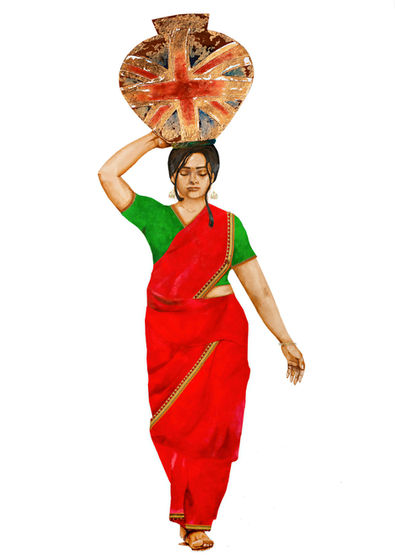
Motherland
ongoing
10 Market Place, Brentford TW8 8EU
A programme of work exploring the early migration experiences of first-generation South Asian women. These women arrived, usually with their children, in the largest immigration wave from South Asia to England in the 1960’s.
Unlike Windrush, this episode in immigration history has no name, there are no markers of the significance of this human tide in which the forgotten daughters of empire came home to claim their British citizenship.
Curator & Art Director
Sabita Kumari-Dass
Exhibiting Artists
Richa Vora / Shivani Mathur
Parul Baliyan / Imogen Patel
Mahzad Safavi
Production Team
Amit Rai Sharma / Jelena Lützel
Romina Bideh / Stephanie Ward
Hero Images
Concept by Sabita Kumari-Dass | Art by Mahzad Safavi & Stephanie Ward
Motherland takes the viewer back to the time when these women arrived in a foreign land, and explores how they set about silently embedding their culture and traditions, steadfastly guiding their children to make the best of both worlds.
From this undocumented, invisible historical moment grew the deep-rooted familial bonds and communities that empowered the educational and business success of South Asian people in the UK and globally.
The unique legacy of these women lives on in the notable achievements of their sons, daughters and grandchildren. All areas of life have been irreversibly impacted by their descendants – hospitality, steel, media, tech, finance, and currently, the most visible being the rise of Rishi Sunak to Prime Minister.
In 2020 there were more South Asian billionaires than any other ethnic group around the world. Every one of those billionaires was raised to succeed by the invisible guiding hand of mothers like the formidable women featured in the exhibition.
Soot Dreams
Concept by Sabita Kumari-Dass | Art by Imogen Patel
First-generation British Asian women remain almost invisible in academic and cultural discourse, occupying a silent space in extant studies of heritage, culture and migration. Their voices and presence are undocumented and their pioneering contribution to the extraordinary achievements of subsequent generations of their families and communities are unrecognised, unattributed.
Now frail, and in their dotage, the remaining women of this pioneer generation are relatively few in number. There is an urgency to document and preserve this neglected history for education and cultural heritage. There is much to learn from the resilience, vibrancy and sheer determination of these women, not just to survive, but to thrive in the UK. Their experience is very relevant for migrant groups arriving to our shores today, particularly as they negotiate their identity and make sense of their displaced existence.
The exhibition challenges prevailing images and stereotypes of first-generation British Asian women, which despite decades of multicultural education and celebrations of cultural diversity, persist in popular culture, educational literature and everyday life. Such outdated images of auntyjis hide the significance of their role as a driving force in nurturing the aspirational values, high expectations and cultural practices that have enabled the extraordinary success of their husbands and sons, daughters and descendants in the economy and culture of the UK.
The stories and artifacts produced for Motherland reveal the power and inner strength of these women and their key role in keeping cultural practices and traditions intact and relevant for future generations. These cultural practices include bhajans (devotional hymns) and boliyaan (folk songs) which embody a strong sense of identity and heritage stories that serve to strengthen social bonds between families and kinship groups and the communities they form.
Featured Artists
Richa Vora / Shivani Mathur / Parul Baliyan

















